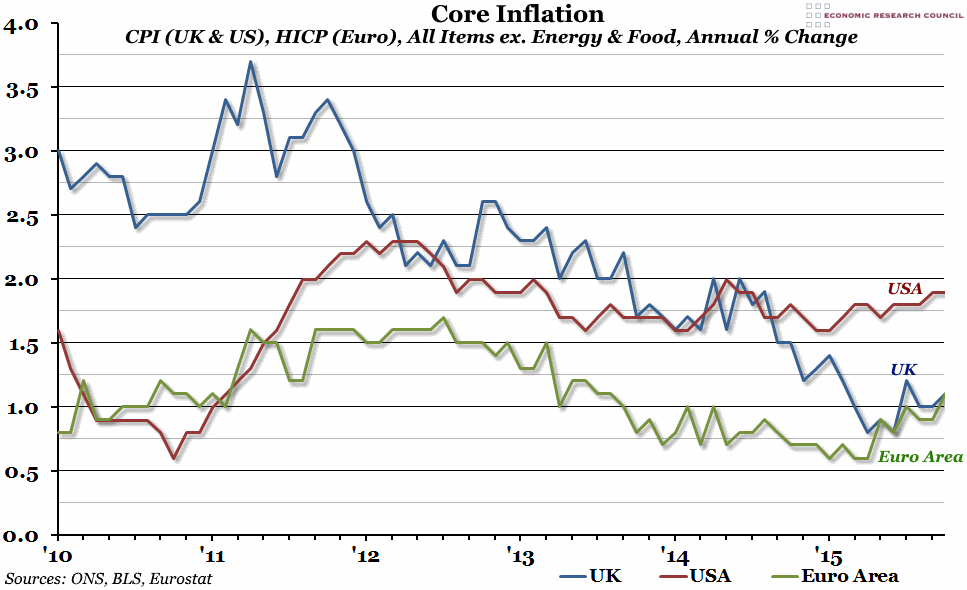
Summary
October inflation figures from around the world have been released this week, and certainly among most of the advanced economies, headline inflation has remained at near-zero (it was 0.2% in the US, 0.1% in the Euro Area, and -0.1% in the UK). Core inflation (excluding energy and food prices) remains quite a bit higher, but is not so uniform.
What does the chart show?
The graph shows a measure of “core” inflation for the UK, the USA, and the Euro Area. For the UK and the US this is based on the Consumer Price Index (CPI), while for the Euro Area it is the HICP (Harmonised Index of Consumer Prices). For all three, the inflation rate shown excludes energy, food, alcohol and tobacco prices, and is the percentage growth in the index over the previous 12 months.
Why is the chart interesting?
Stripping away the more volatile elements in the headline inflation figure is meant to give you a clearer view of the underlying movements in prices more generally. Particularly recently, falling oil and food prices have been dragging the headline figure down, while core inflation has remained much higher in most advanced economies. This has been good for consumers in those countries, as cheap petrol and food have lowered the cost of living, boosting consumer spending and economic growth. In the UK, core inflation was much higher than elsewhere in 2010 and 2011, and has since fallen steadily. It remains historically low at the moment, perhaps due to low transport costs feeding through to consumer prices, although it is clear that we are still far from being in a deflationary period. By contrast, core inflation in the Euro Area has been rising since the beginning of the year (maybe a sign that their vast quantitative easing programme is having an effect) and is now back up over 1% for the first time since 2013. In the US, core inflation has remained surprisingly steady for a few years, and has been much higher than the UK since the end of 2014. This is just one reason why the US Federal Reserve are likely to be the first Central Bank to raise interest rates (perhaps next month), despite low headline inflation figures.

